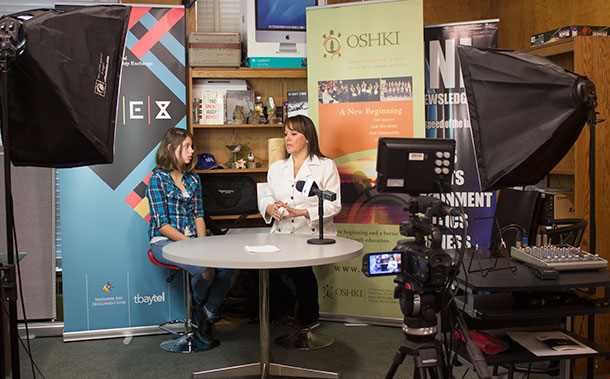THUNDER BAY – Editorial – The issue of cyber-bullying and youth sharing images electronically are in the news in Thunder Bay and across Canada. Thunder Bay Police are stating “Any nude image of a young person under the 18 years is considered to be child pornography. The person who took the image could be investigated for the offence of Making Child Pornography. Once this image is posted and sent electronically then the offences of Distribution of Child Pornography and Possession of Child Pornography become issues.
“When the police are investigating child pornography incidents, they will be seizing any electronic device that images have been viewed on. These devices will not be returned since images can never be truly deleted from them. This would mean that any phone, computer, ipod or any other such device would be forfeited,” continue the police service.
There are specific penalties in place for child pornography, and those penalties are needed. However, sources tell NNL that incidents of teens sharing images in our community are far more rampant than most know. What it likely demonstrates is that youth view technology as a communications tool in ways far differently than adults, parents, educators, police, the courts, and legislators.
Those youth are not looking at what they are doing as ‘pornography’. They are likely looking at it as harmless. There are serious risks to what they are doing, and there needs to be education on what those risks are to youth, and to their futures.
As demonstrated by the suicide of Amanda Todd, the issue of cyber-bullying is not something to brush aside, it is a serious issue. Amanda Todd was targeted specifically by what has been reported was an adult, who was specifically targeting, attacking and threatening her.
The RCMP in British Columbia report, “The outpouring of support, emotion and information is literally overwhelming”. Sergeant Peter Thiessen, Lower Mainland District RCMP states, “The internet and social media were central to Amanda’s story and they are central to our investigation as well. One of our big challenges right now, is false information that is being spread by people who appear to be trying to use Amanda’s story to do harm or make a profit”.
Investigators have spent a lot of time responding to rumours spreading quickly through online and social media. One unfounded allegation involved the release of information that spread quickly online identifying a man as Amanda’s tormentor. Another rumour involved the supposed release of Amanda Todd’s autopsy photos. This was quickly debunked by the BC Coroner’s Service but nevertheless caused extreme stress for Amanda’s family and distracted investigators for hours.
The issue has gained world-wide attention. There is an issue appearing in the frustration, and anger from this situation being missed by many.
Youth who are dating and sharing images is not cyber-bulling, and likely the question should be asked if they are child pornographers? What likely needs to be examined by legislators, and it is going to take enormous courage to do, is examining the legal situations arising over the issue of minors sharing images with each other using digital technology.
A teen aged girl taking her picture, and sharing it with someone she is dating poses risk. It is not a decision however that youth seem to be too worried about. It is also likely a decision that a young teen is not likely to discuss with her parents seeking advice. That advice would certainly be a resounding ‘No!’ and could put the youth’s access to their phone or computer at risk from worried parents. If you have ever witnessed a teen cut off from access to the Internet you would realize how important communications is to young people.
Education is one of the factors that must be expanded. The idea however that the teen should be branded a child pornographer or distributor of child pornography over sharing a picture with someone who they are dating is something that likely needs to be examined by the courts and legislature. For teens, the issues are seen differently than by the laws. That might make many parents, school officials, law enforcement, and politicians uncomfortable.
Part of the process likely means for police, school officials, teachers, parents, and politicians to start the process of learning more about how youth use social media, their smart phones and computers. Some of the discussion could be developing legislation that provides for a young person who makes a foolish decision not to be branded a child pornographer for life.
While the federal privacy commissioner is often gravely concerned over online privacy, the actions of many young people toward the issue of how they view the importance of privacy are far different.
Youth who date for a few weeks will end up sharing their banking PINs, and often too passwords. When you read or hear about someone ‘hacking’ into an email account or a Facebook account, the reality is that often it is someone having left a computer, smart device, or IPod touch unattended more than a computer hacker going into the accounts.
There are cases where cyber-stalkers do things to find out more about the identities of their targeted victims, but in the case of many youth it is their friends or school associates more frequently who are on their accounts. There is already legislation on those instances on the books.
Making decisions toward youth justice will require far greater understanding of the entire issue, and the ways that youth view what they are doing. If that is not done, chances are legislators are going to be sentencing young people to a lifetime of punishment over what was more a youthful indiscretion than a criminal intent.
As a society we must ask ourselves is that the goal here?
James Murray





